-
 Bitcoin
Bitcoin $108,879.8879
0.11% -
 Ethereum
Ethereum $2,565.0410
0.07% -
 Tether USDt
Tether USDt $1.0001
0.00% -
 XRP
XRP $2.2915
-0.14% -
 BNB
BNB $660.7569
-0.20% -
 Solana
Solana $151.1919
-0.78% -
 USDC
USDC $1.0000
0.00% -
 TRON
TRON $0.2869
-0.14% -
 Dogecoin
Dogecoin $0.1698
-0.98% -
 Cardano
Cardano $0.5832
-0.83% -
 Hyperliquid
Hyperliquid $38.2151
-3.65% -
 Sui
Sui $2.8819
-1.10% -
 Bitcoin Cash
Bitcoin Cash $498.0045
0.53% -
 Chainlink
Chainlink $13.3860
-1.54% -
 UNUS SED LEO
UNUS SED LEO $9.0541
-0.22% -
 Stellar
Stellar $0.2535
1.00% -
 Avalanche
Avalanche $18.0791
-0.65% -
 Shiba Inu
Shiba Inu $0.0...01185
0.83% -
 Toncoin
Toncoin $2.7669
-1.12% -
 Hedera
Hedera $0.1575
-1.49% -
 Litecoin
Litecoin $86.3735
-1.06% -
 Monero
Monero $316.7337
-1.19% -
 Dai
Dai $1.0000
0.01% -
 Polkadot
Polkadot $3.3611
-0.82% -
 Ethena USDe
Ethena USDe $1.0002
0.01% -
 Bitget Token
Bitget Token $4.2618
-1.76% -
 Uniswap
Uniswap $7.4587
0.85% -
 Aave
Aave $282.3607
-1.88% -
 Pepe
Pepe $0.0...01004
-0.06% -
 Pi
Pi $0.4576
-0.29%
How to check the transaction status when transferring money in Ethereum wallet?
2025/03/24 20:56
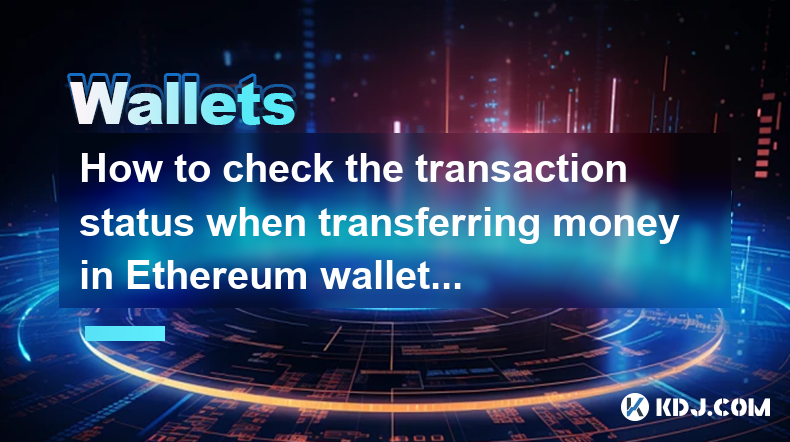
How to Check the Transaction Status When Transferring Money in an Ethereum Wallet?
Transferring Ether (ETH) or ERC-20 tokens on the Ethereum network involves several steps, and monitoring the transaction's progress is crucial. The speed and confirmation time vary significantly depending on network congestion and the gas fee you set. Understanding how to track your transaction is therefore essential to avoid unnecessary worry and ensure your funds arrive safely.
Understanding Ethereum Transactions
Unlike traditional banking systems, Ethereum transactions aren't instantly processed. They're included in blocks, which are added to the blockchain sequentially by miners. This process takes time, and the confirmation time depends heavily on the network's current activity. A higher gas fee generally leads to faster processing, as miners prioritize transactions with higher fees.
Methods to Check Transaction Status
There are several ways to track your Ethereum transaction status, each offering different levels of detail.
- Using Your Wallet's Interface: Most Ethereum wallets (like MetaMask, Trust Wallet, Ledger Live) provide built-in transaction trackers. After initiating a transfer, the wallet typically displays the transaction hash (a unique identifier). Clicking on this hash will show the transaction's status – pending, confirmed, or failed. The interface usually displays the transaction's progress in real-time.
- Using Block Explorers: Block explorers are websites that provide a detailed view of the Ethereum blockchain. Popular options include Etherscan, Blockscout, and others. You can enter your transaction hash into these explorers to see its current status, including the block it's been included in (if confirmed), the gas used, and the transaction fee. These explorers offer a comprehensive overview, often surpassing the detail provided by your wallet.
- Using Third-Party Transaction Trackers: Some third-party services specialize in tracking cryptocurrency transactions. These platforms aggregate data from multiple block explorers, offering a convenient way to monitor your transactions across different blockchains, not just Ethereum. However, always verify the legitimacy of any third-party service before using it.
Interpreting Transaction Status
Understanding the different transaction statuses is vital.
- Pending: This indicates your transaction is awaiting inclusion in a block. It's still unconfirmed, and the funds haven't yet reached the recipient. This phase's duration depends on network congestion and the gas price.
- Confirmed: Once your transaction is included in a block, it's considered confirmed. The number of confirmations required for security varies, but generally, six confirmations are considered sufficient. The more confirmations, the lower the probability of the transaction being reversed (though this is extremely rare on Ethereum).
- Failed: A failed transaction indicates that something went wrong. Reasons include insufficient funds, an incorrect recipient address, or a gas fee too low for the network's current conditions. The details of the failure are usually provided by your wallet or the block explorer.
Troubleshooting Transaction Issues
If your transaction remains pending for an extended period, several factors could be at play.
- Network Congestion: High network activity can significantly delay transaction confirmations. This is common during periods of high trading volume or when new projects launch on Ethereum.
- Insufficient Gas Fee: If your gas fee is too low, miners might not prioritize your transaction, leading to delays or failure. Increasing the gas fee often resolves this.
- Incorrect Recipient Address: Double-check the recipient address to ensure it's correct. Sending funds to the wrong address results in irreversible loss of funds.
- Wallet Issues: Problems with your wallet software can also interfere with transactions. Try restarting your wallet or updating it to the latest version.
Advanced Techniques
For more control over transaction speed, you can adjust the gas price manually. Higher gas prices increase the likelihood of faster confirmation, but they also increase transaction fees. Many wallets allow you to choose between "standard," "fast," and "fastest" gas options.
Specific Wallet Instructions
The exact steps for checking transaction status vary slightly depending on the wallet you use. Consult your wallet's documentation or support resources for detailed instructions specific to your chosen platform.
Common Questions and Answers
Q: My Ethereum transaction is pending for a long time. What should I do?
A: First, check the network congestion. If the network is congested, you might need to wait or increase your gas fee. If the network is not congested, check your wallet and the transaction details on a block explorer for any error messages.
Q: What does "gas" mean in an Ethereum transaction?
A: Gas is the computational cost required to execute a transaction on the Ethereum network. It's paid in ETH and determines the transaction fee.
Q: How many confirmations are needed for a secure Ethereum transaction?
A: While one confirmation is generally sufficient for many, six confirmations are typically considered secure. The higher the number of confirmations, the lower the risk of reversal.
Q: My Ethereum transaction failed. What are the possible reasons?
A: Possible reasons include insufficient funds, an incorrect recipient address, or an insufficient gas fee. Check your wallet and the transaction details on a block explorer for specific error messages.
Q: Can I cancel a pending Ethereum transaction?
A: Generally, you cannot cancel a pending Ethereum transaction. Once initiated, it enters the network. However, some wallets might offer a method to replace a transaction with a new one with a higher gas fee, effectively overriding the original.
Q: Where can I find my transaction hash?
A: Your transaction hash is usually displayed in your wallet after you initiate a transaction. It's a unique alphanumeric identifier that allows you to track the transaction on block explorers.
免责声明:info@kdj.com
所提供的信息并非交易建议。根据本文提供的信息进行的任何投资,kdj.com不承担任何责任。加密货币具有高波动性,强烈建议您深入研究后,谨慎投资!
如您认为本网站上使用的内容侵犯了您的版权,请立即联系我们(info@kdj.com),我们将及时删除。
- 系绳的淘金热:80亿美元的瑞士拱顶和Stablecoins的未来
- 2025-07-09 02:50:13
- 马s,地幔和Stablecoin实用程序:加密付款的新时代?
- 2025-07-09 02:50:13
- 原子看涨突破:加密情绪和宇宙生态系统
- 2025-07-09 02:55:12
- Kraken,后机翼和Memecoins:狂野前往新加坡大奖赛!
- 2025-07-09 00:50:12
- Cronos SkyOlocket:解码CRO的加密速度的原因
- 2025-07-09 01:30:12
- 以太坊的华尔街Love&Ruvi AI的审计集会:加密鸡尾酒
- 2025-07-09 00:55:12
相关百科

如果我忘记了我的特佐尔密码短语会发生什么
2025-07-09 03:15:08
理解三倍密封词的作用如果您使用Trezor硬件钱包,则可能已经设置了一个密码,作为恢复种子以外的额外安全性。与您的设备随附的12或24字恢复短语不同, Trezor密码短语就像隐藏的钱包修饰符一样。输入时,它会创建一个全新的钱包推导路径,这意味着如果没有正确的密码,您将无法访问关联的资金。此附加单词...
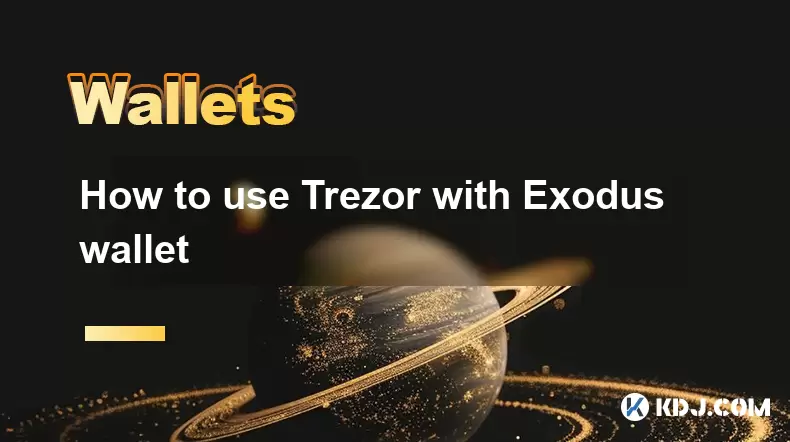
如何将Trezor与Exodus Wallet一起使用
2025-07-09 00:49:34
将Trezor硬件钱包连接到出埃及软件钱包要将Trezor与Exodus Wallet一起使用,用户需要将硬件钱包连接到Exodus提供的软件接口。这种集成允许增强安全性,同时通过用户友好的界面管理数字资产。该过程涉及几个关键步骤,每个步骤都必须仔细遵循以确保安全和功能的连接。使用USB电缆插入Tr...
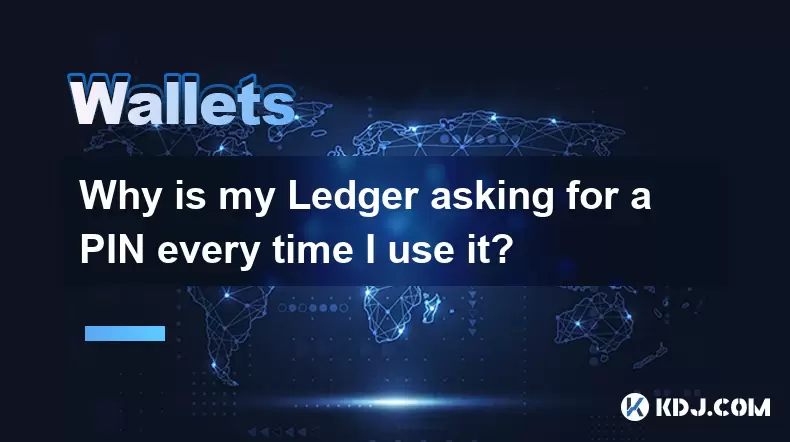
为什么我的分类帐每次使用时都要求销钉?
2025-07-08 23:21:50
了解分类帐设备上的针的目的PIN(个人身份证号码)是每个分类帐硬件钱包中内置的至关重要的安全功能。它的主要功能是保护您的设备免于未经授权的访问。首次设置分类帐时,提示您创建一个独特的引脚代码,该代码是加密货币持有的第一层防御层。这种机制确保了即使某人物理可以访问您的分类帐设备,他们也无法在不知道正确...
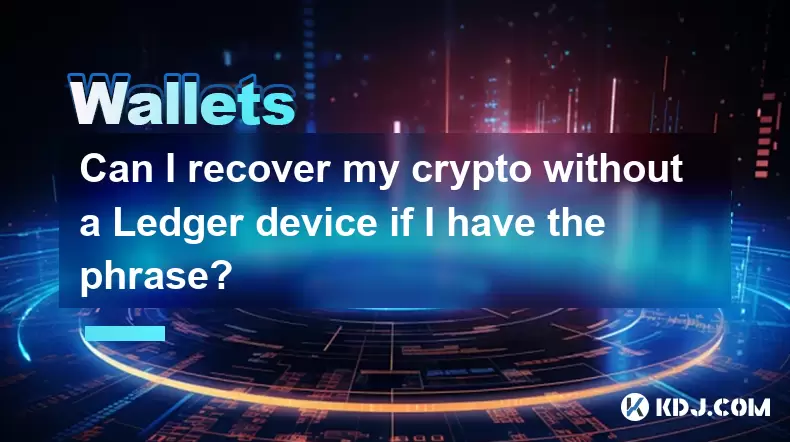
如果我有短语,我可以在没有分类帐设备的情况下恢复加密货币吗?
2025-07-09 01:36:01
了解恢复短语在加密安全性中的作用如果您有恢复短语但没有账本设备,则可能想知道是否有可能恢复加密货币。简短的答案是肯定的,如果您有恢复短语,则可以在没有分类帐设备的情况下恢复加密货币。这是因为恢复短语(也称为种子短语)是钱包私钥的人类可读形式。包括分类帐在内的大多数硬件钱包都使用称为BIP-39的标准...
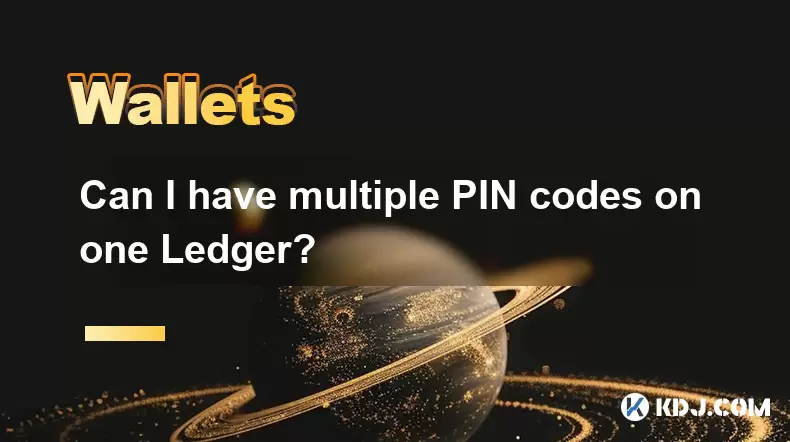
我可以在一个分类帐上有多个PIN代码吗?
2025-07-09 00:35:18
了解分散交流(DEX)的基础知识分散的交换或DEX是一种无中央权威运作的加密货币交易平台。与传统的集中交易所(CEXS)不同,DEX允许用户直接从其钱包进行交易,而无需将资金存入交易所本身。这种结构增强了安全性并降低了对手的风险,因为用户在整个交易过程中保留对其私钥的控制权。智能合约权力大多数分散的...
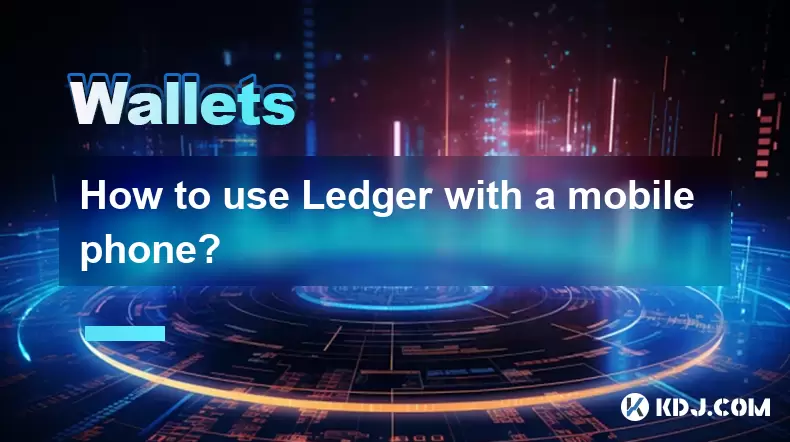
如何将Ledger与手机一起使用?
2025-07-08 22:49:45
将分类帐硬件钱包连接到移动设备使用手机使用分类帐硬件钱包,提供了一种安全便捷的方法来管理途中的加密货币。首先,请确保您的移动设备满足必要的要求:Android 8.0或更高或运行iOS 13.0或以后的iOS设备。 LEDGER LIVE应用必须从相应的App Store安装。使用适当的电缆将您的分...

如果我忘记了我的特佐尔密码短语会发生什么
2025-07-09 03:15:08
理解三倍密封词的作用如果您使用Trezor硬件钱包,则可能已经设置了一个密码,作为恢复种子以外的额外安全性。与您的设备随附的12或24字恢复短语不同, Trezor密码短语就像隐藏的钱包修饰符一样。输入时,它会创建一个全新的钱包推导路径,这意味着如果没有正确的密码,您将无法访问关联的资金。此附加单词...

如何将Trezor与Exodus Wallet一起使用
2025-07-09 00:49:34
将Trezor硬件钱包连接到出埃及软件钱包要将Trezor与Exodus Wallet一起使用,用户需要将硬件钱包连接到Exodus提供的软件接口。这种集成允许增强安全性,同时通过用户友好的界面管理数字资产。该过程涉及几个关键步骤,每个步骤都必须仔细遵循以确保安全和功能的连接。使用USB电缆插入Tr...

为什么我的分类帐每次使用时都要求销钉?
2025-07-08 23:21:50
了解分类帐设备上的针的目的PIN(个人身份证号码)是每个分类帐硬件钱包中内置的至关重要的安全功能。它的主要功能是保护您的设备免于未经授权的访问。首次设置分类帐时,提示您创建一个独特的引脚代码,该代码是加密货币持有的第一层防御层。这种机制确保了即使某人物理可以访问您的分类帐设备,他们也无法在不知道正确...

如果我有短语,我可以在没有分类帐设备的情况下恢复加密货币吗?
2025-07-09 01:36:01
了解恢复短语在加密安全性中的作用如果您有恢复短语但没有账本设备,则可能想知道是否有可能恢复加密货币。简短的答案是肯定的,如果您有恢复短语,则可以在没有分类帐设备的情况下恢复加密货币。这是因为恢复短语(也称为种子短语)是钱包私钥的人类可读形式。包括分类帐在内的大多数硬件钱包都使用称为BIP-39的标准...

我可以在一个分类帐上有多个PIN代码吗?
2025-07-09 00:35:18
了解分散交流(DEX)的基础知识分散的交换或DEX是一种无中央权威运作的加密货币交易平台。与传统的集中交易所(CEXS)不同,DEX允许用户直接从其钱包进行交易,而无需将资金存入交易所本身。这种结构增强了安全性并降低了对手的风险,因为用户在整个交易过程中保留对其私钥的控制权。智能合约权力大多数分散的...

如何将Ledger与手机一起使用?
2025-07-08 22:49:45
将分类帐硬件钱包连接到移动设备使用手机使用分类帐硬件钱包,提供了一种安全便捷的方法来管理途中的加密货币。首先,请确保您的移动设备满足必要的要求:Android 8.0或更高或运行iOS 13.0或以后的iOS设备。 LEDGER LIVE应用必须从相应的App Store安装。使用适当的电缆将您的分...
查看所有文章

























































































